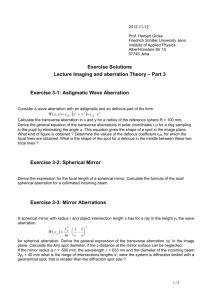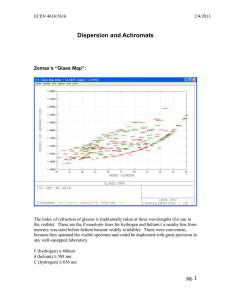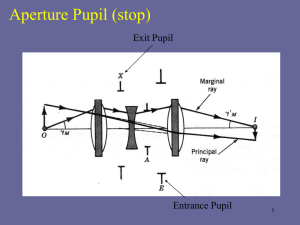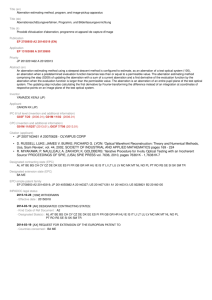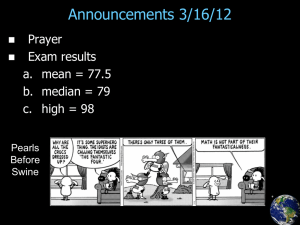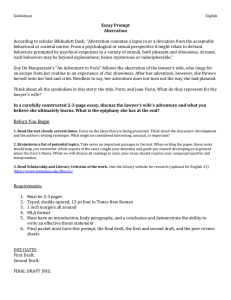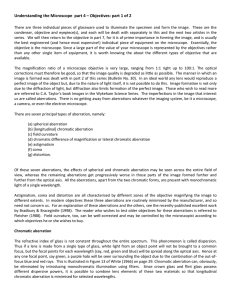Spherical aberration(球差)
advertisement
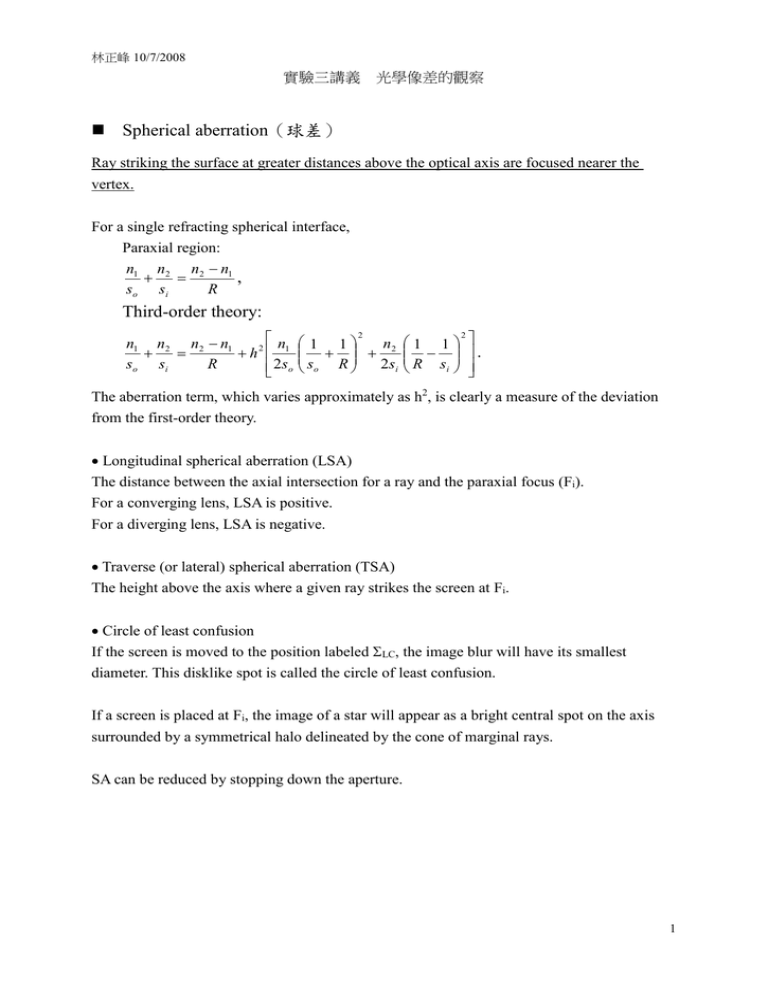
林正峰 10/7/2008 實驗三講義 光學像差的觀察 Spherical aberration(球差) Ray striking the surface at greater distances above the optical axis are focused nearer the vertex. For a single refracting spherical interface, Paraxial region: n1 n2 n2 n1 , s o si R Third-order theory: n n1 n2 n2 n1 h2 1 s o si R 2so 2 1 1 n 2 2si so R 1 1 R si 2 . The aberration term, which varies approximately as h2, is clearly a measure of the deviation from the first-order theory. Longitudinal spherical aberration (LSA) The distance between the axial intersection for a ray and the paraxial focus (Fi). For a converging lens, LSA is positive. For a diverging lens, LSA is negative. Traverse (or lateral) spherical aberration (TSA) The height above the axis where a given ray strikes the screen at Fi. Circle of least confusion If the screen is moved to the position labeled LC, the image blur will have its smallest diameter. This disklike spot is called the circle of least confusion. If a screen is placed at Fi, the image of a star will appear as a bright central spot on the axis surrounded by a symmetrical halo delineated by the cone of marginal rays. SA can be reduced by stopping down the aperture. 1 林正峰 10/7/2008 2 林正峰 10/7/2008 (a) (b) (a): Images of a point source produced by an optical system with increasing amounts of spherical aberration. (b): Images of a distant star formed by the HST. Chromatic aberrations(色差) The chromatic aberration arises from the fact that refractive index of the lens is wavelength-dependent. -Axial chromatic aberration (ACA) Horizontal distance between the axial images. Positive: blue focus is to the left of red focus, positive lenses Negative: blue focus is to the right of red focus, negative lenses -Lateral chromatic aberration (LCA) Vertical difference in height of images. 3 林正峰 10/7/2008 Axial chromatic aberration Lateral chromatic aberration 4

